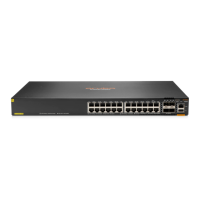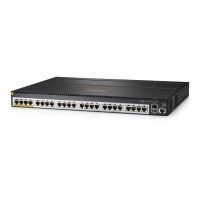116
Managing the device
This chapter describes how to configure basic device parameters and manage the device.
You can perform the configuration tasks in this chapter in any order.
Device management task list
Tasks at a glance
(Required.) Configuring the device name
(Required.) Configuring the system time
(Optional.) Enabling displaying the copyright statement
(Optional.) Configuring banners
(Optional.) Rebooting the device
(Optional.) Scheduling a task
(Optional.) Disabling password recovery capability
(Optional.) Setting the port status detection timer
(Optional.) Configuring CPU usage monitoring
(Required.) Setting memory thresholds
(Required.) Configuring the temperature alarm thresholds
(Required.) Verifying and diagnosing transceiver modules
(Optional.) Restoring the factory-default settings and states
Configuring the device name
A device name (also called hostname) identifies a device in a network and is used as the user view
prompt at the CLI. For example, if the device name is Sysname, the user view prompt is <Sysname>.
To configure the device name:
Step Command Remarks
1. Enter system view.
system-view
N/A
2. Configure the device name.
sysname
sysname
The default device name is
HPE
.
Configuring the system time
Specifying the system time source
The device can use one of the following system time sources:
• None—Local system time, which is manually configured at the CLI.

